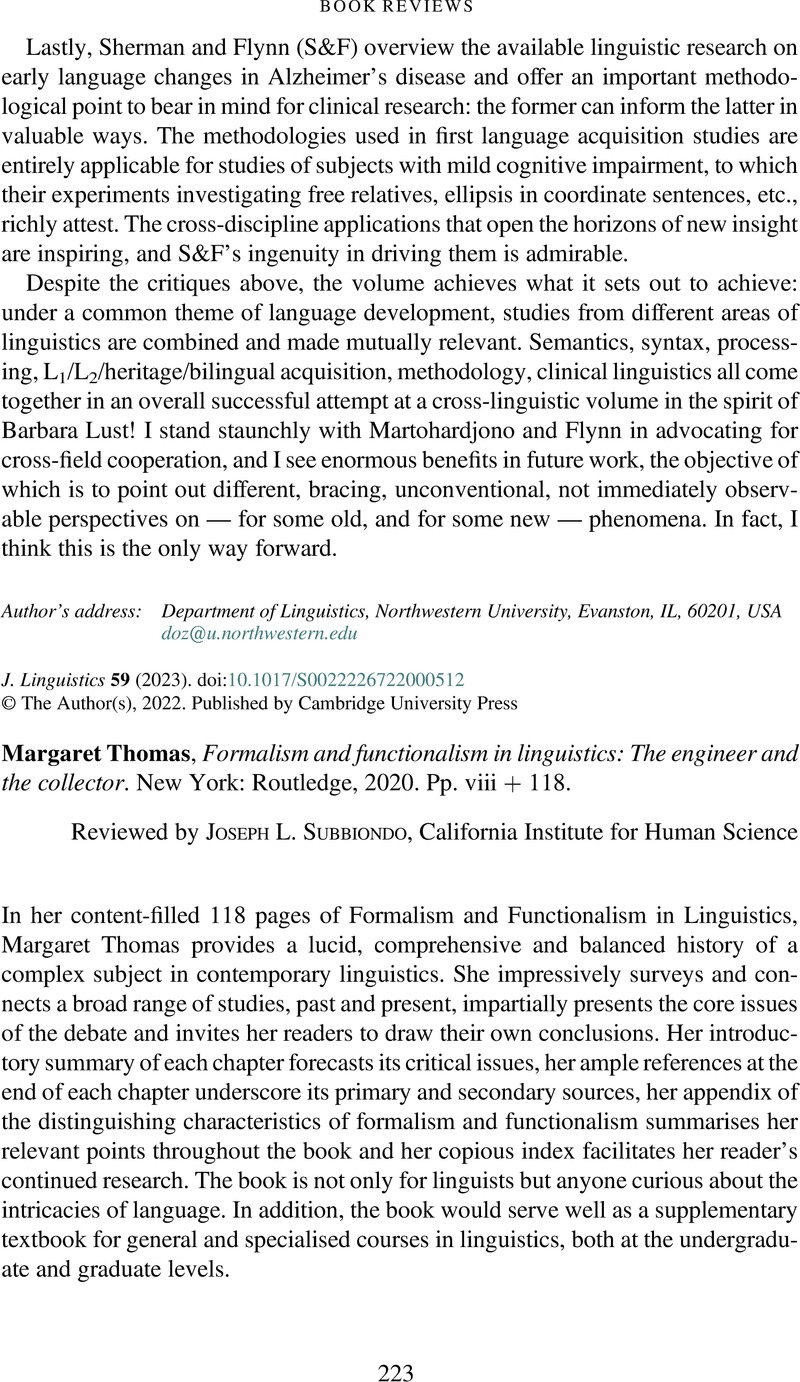No CrossRef data available.
Article contents
Margaret Thomas, Formalism and functionalism in linguistics: The engineer and the collector. New York: Routledge, 2020. Pp. viii + 118.
Review products
Margaret Thomas, Formalism and functionalism in linguistics: The engineer and the collector. New York: Routledge, 2020. Pp. viii + 118.
Published online by Cambridge University Press: 14 December 2022
Abstract
An abstract is not available for this content so a preview has been provided. Please use the Get access link above for information on how to access this content.

Information
- Type
- Book Review
- Information
- Copyright
- © The Author(s), 2022. Published by Cambridge University Press
References
Dirven, René & Fried, Vilém. 1987. By way of introduction. In Dirven, René & Fried, Vilém (eds.), Functionalism in linguistics, ix–xvii. Amsterdam: John BenjaminsCrossRefGoogle Scholar
Fischer, Olga. 2007. Morphosyntactic change: Functional and formal perspectives. Oxford: Oxford University Press.Google Scholar
Givón, Talmy. 1995. Functionalism and grammar. Amsterdam/Philadelphia: John Benjamins.CrossRefGoogle Scholar
Hyams, Nina. 1999. Underspecification and modularity in early syntax: A formalist perspective on language acquisition. In Moravcsik, Edith, Darnell, Michael, Newmeyer, Frederick, Noonan, Michael, & Wheatley, Kathleen (eds.). Functionalism and formalism in linguistics, vol. 1, 387–413. Amsterdam/Philadelphia: John Benjamins.CrossRefGoogle Scholar
Joseph, John. 2002. Bloomfield’s and Chomsky’s readings of Course de linguistique générale. In Joseph, John E. (ed.) From Whitney to Chomsky: Essays in the history of American linguistics, 133–155. Amsterdam/Philadelphia: John Benjamins.Google Scholar
Newmeyer, Frederick. 1998. Language form and language function. Cambridge MA: MIT Press.Google Scholar
Newmeyer, Frederick. 2001. The Prague School and North American functionalist approaches to syntax. Journal of Linguistics 37, 101–126.CrossRefGoogle Scholar


